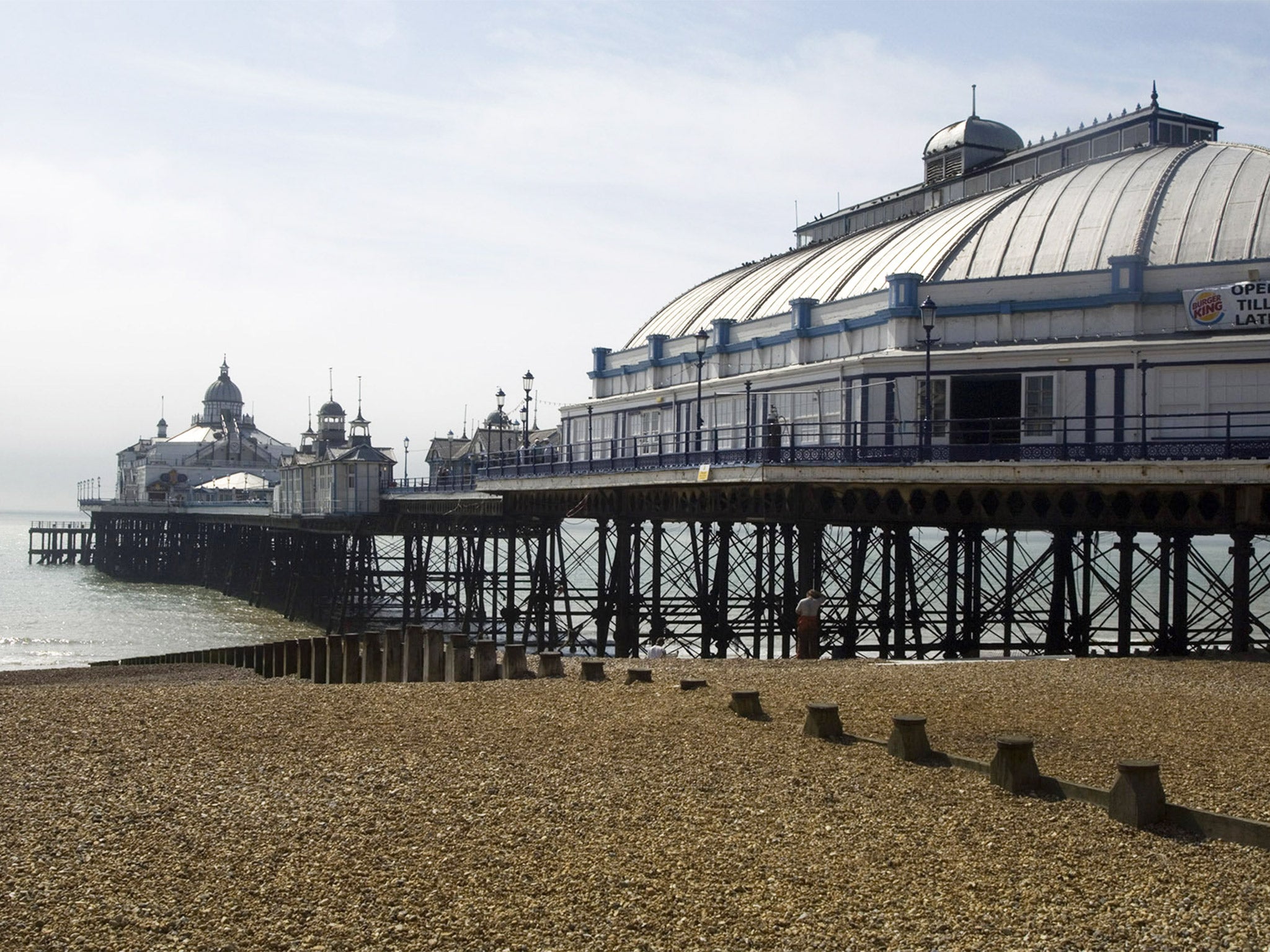Eastbourne Pier and wreck of the Hazardous added to English Heritage's 2014 'at risk' list

Your support helps us to tell the story
From reproductive rights to climate change to Big Tech, The Independent is on the ground when the story is developing. Whether it's investigating the financials of Elon Musk's pro-Trump PAC or producing our latest documentary, 'The A Word', which shines a light on the American women fighting for reproductive rights, we know how important it is to parse out the facts from the messaging.
At such a critical moment in US history, we need reporters on the ground. Your donation allows us to keep sending journalists to speak to both sides of the story.
The Independent is trusted by Americans across the entire political spectrum. And unlike many other quality news outlets, we choose not to lock Americans out of our reporting and analysis with paywalls. We believe quality journalism should be available to everyone, paid for by those who can afford it.
Your support makes all the difference.Eastbourne Pier, which was ravaged by a devastating fire this summer, and the wreck of the 18th century British warship Hazardous are among the properties which have been added to English Heritage’s annual At Risk register.
The register provides the most comprehensive list of buildings, places of worship, industrial sites, monuments, archaeology, parks and gardens as well as protected wrecks and battlefields, which are identified as at risk and in need of rescue.
The 144-year-old privately owned Grade II listed Eastbourne Pier in East Sussex was gutted by a conflagration which police called “suspicious” in July. The fire destroyed one third of the structure, including the arcade building.
English Heritage said the pier was “one of the most important of its kind in the country”, and is giving expert advice on its repair. The eastern walkway has already reopened helping local businesses at the end of the pier.
Also added is the wreck site of Hazardous, a 54-gun warship which was beached in Bracklesham Bay in Sussex during a storm in 1706.
“Licensed divers discovered it was at risk of being lost to the nation through serious environmental threats,” the Register says. “The winter storms of 2013/14 have significantly reduced the layers of sand that were covering much of the wreck exposing artifacts such as ship fixtures and fittings, and armaments such as cannon trucks to increased deterioration and decay.”
The Geevor Tin Mine in Cornwall, the largest and most complete surviving tin mine in Britain and Europe, which remains much as it was when it closed in 1991, and which has been since opened to the public, is also added.
The number of paying visitors is not sufficient to cover the amount of conservation and machine repair work required to keep the mine viable as a museum attraction.
Happily, English Heritage has been able to take a number of sites off the list after repair work, including the wreck of the Holland No. 5, the first submarine built by the Royal Navy in 1903, which sunk six miles off the coast of Eastbourne.
The granite and marble tomb of performer Emile Blondin, most famous for crossing Niagara Falls on a tightrope, has also been restored at Kensal Green Cemetery.
For the first time, a comprehensive review has been conducted of all listed places of worship in England showing that just six per cent of places of worship are at risk.
Simon Thurley, English Heritage Chief Executive, said: “Although there has been a reduction in the number of sites on the register, more than a third of buildings that were on the national register when it first began in 1999 are still there now.
“We can’t give up on all these incredibly important historic buildings; getting them back in use will lift the blight from historic areas, bringing back in to use really important buildings and giving people a sense of pride in where they live.
“As the economy starts to improve and the demand for development increases, we need to push these buildings forward and find a future for them.”
In need of rescue
- Geevor Tin Mine in west Cornwall, built in the 18th century and operational until 1991; the largest and most complete surviving tin mine in Europe
- Eastbourne Pier in Sussex, ravaged by fire this summer
- Bedlam Furnaces, Ironbridge Gorge, where the nearby world famous bridge was forged
- The shipwreck of Hazardous, an 18th century British warship, beached in Bracklesham Bay, Sussex, during a storm in 1706
Rescued in the past year
- Langham Airfield Dome in Norfolk, built in 1942 to train anti-aircraft gunners, and one of only six Second World War training domes left in the country
- Newman Brothers Coffin Works in Birmingham, built in 1894; the most prestigious manufacturer of coffins in the world, providing coffins for the funerals of Sir Winston Churchill and Neville Chamberlain
- The London tomb of performer Emile Blondin, most famous for crossing Niagara Falls on a tightrope, at Kensal Green Cemetery
- The wreck of the Holland No. 5, discovered off the South East coast in September 2000; the only surviving example of this class of submarine on the seabed anywhere in the world
Join our commenting forum
Join thought-provoking conversations, follow other Independent readers and see their replies
Comments